MARCH 13, 2025: When I first planned this trip, I completely forgot about Purim. Originally, we were supposed to drive to Palermo today, but our plans changed because of the holiday. Instead, we decided to return to Catania—the city where we first arrived to in Sicily—since there is a small Jewish congregation there. Mark had reached out to them via email, and from what we understood, there would be a Megillah reading this evening.
After a week in Sicily, today was the first morning we woke up to sunshine and blue skies. The difference was remarkable. With good visibility, we could finally see the beauty of the island—mountains in one direction, and in the other, the Aeolian Islands visible in the distance. It’s much easier to fall in love with Sicily when the weather is good.
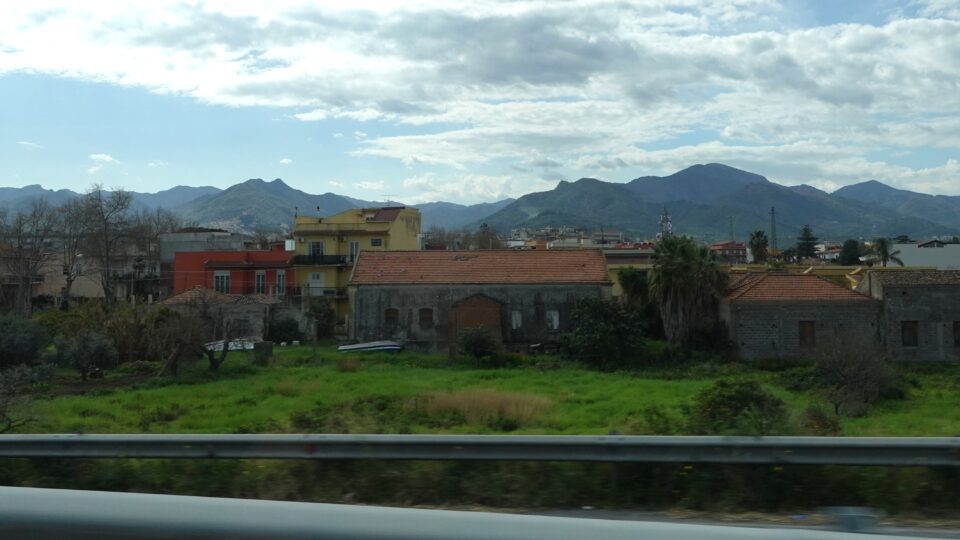
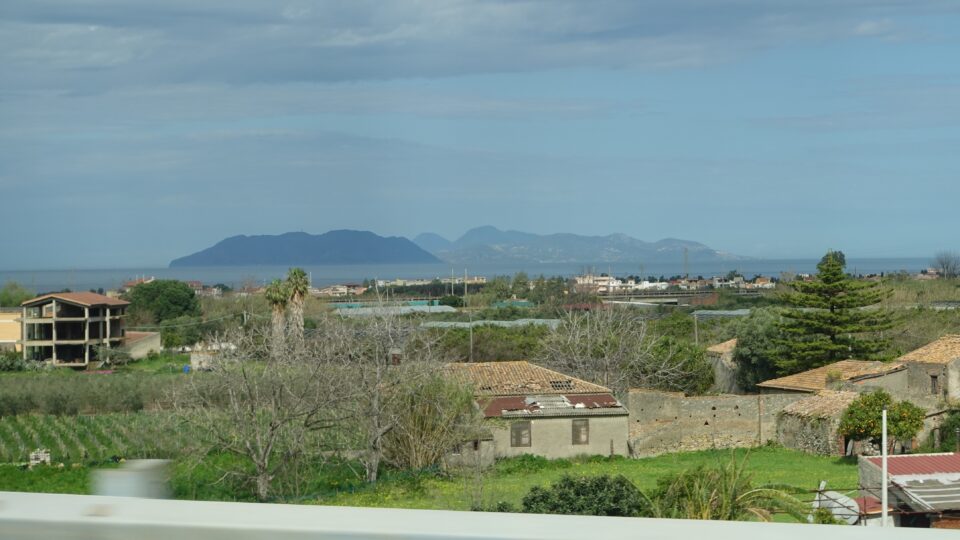
Instead of returning to Catania the way we arrived, along the coast, we planned to drive over the mountains. Along the way, we would visit two towns that once had small Jewish communities.
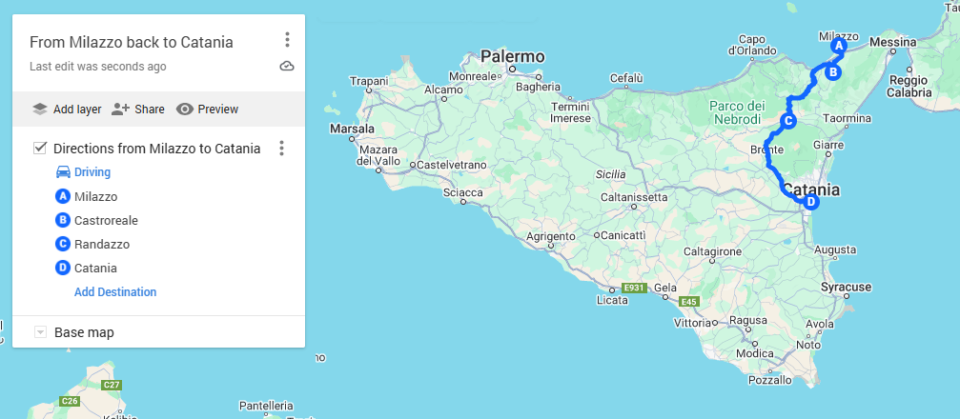
Our first destination was Castroreale, a small hilltop town with about 2,200 residents. To reach it, we took a winding mountain road that climbed steadily upward. The countryside was lush green, dotted with agricultural fields, olive groves, and scattered houses—stunning scenery at every turn.
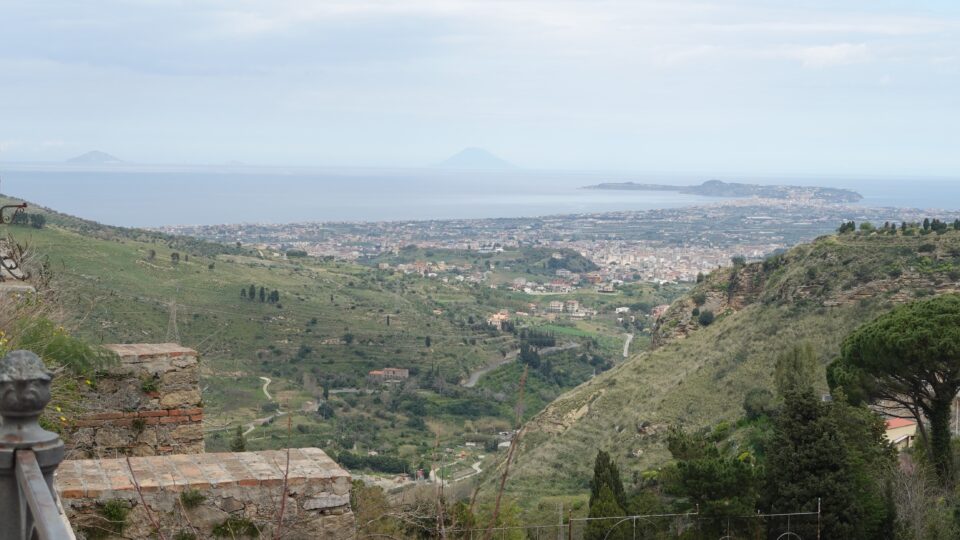
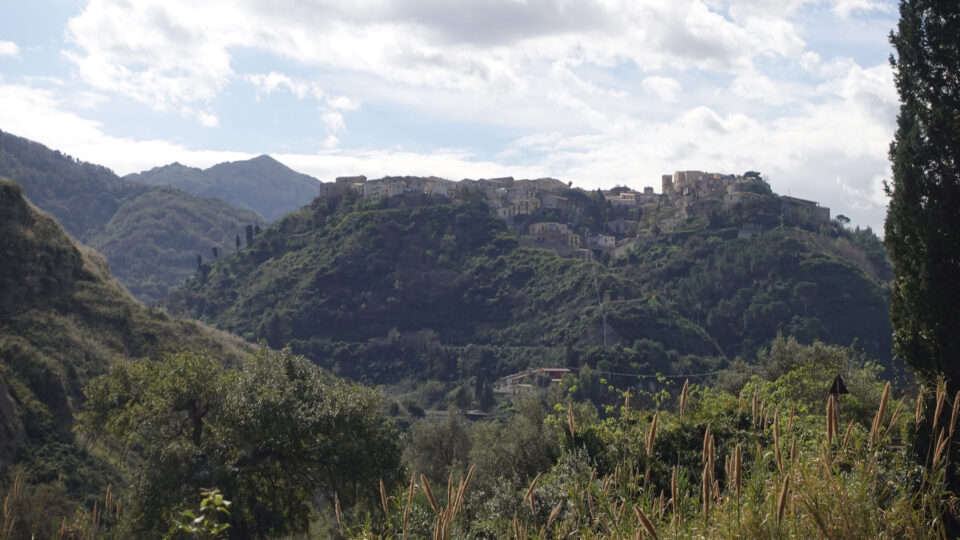
Castroreale once had a small Jewish community, and today all that remains is the arch from the synagogue. The location of the former Jewish quarter is also approximately known.
Our first impressions of the town were very favorable—it was picturesque, clean, and even had easy parking.
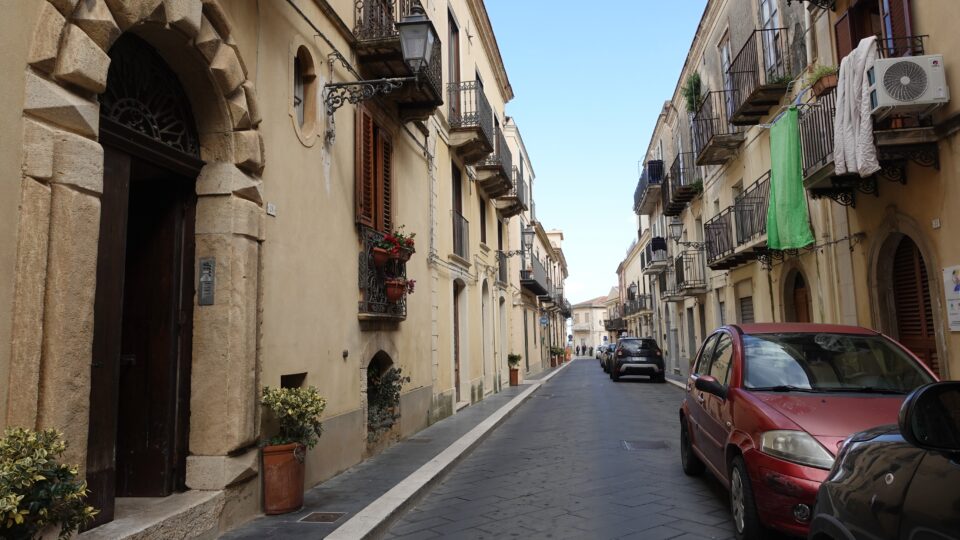
We wandered through the narrow lanes that once formed the Jewish quarter in search of the synagogue arch but found several arches, unsure which one it was. Only as we were about to leave the town, did we spot a municipal map hidden behind a tree, which clearly marked the synagogue’s location.
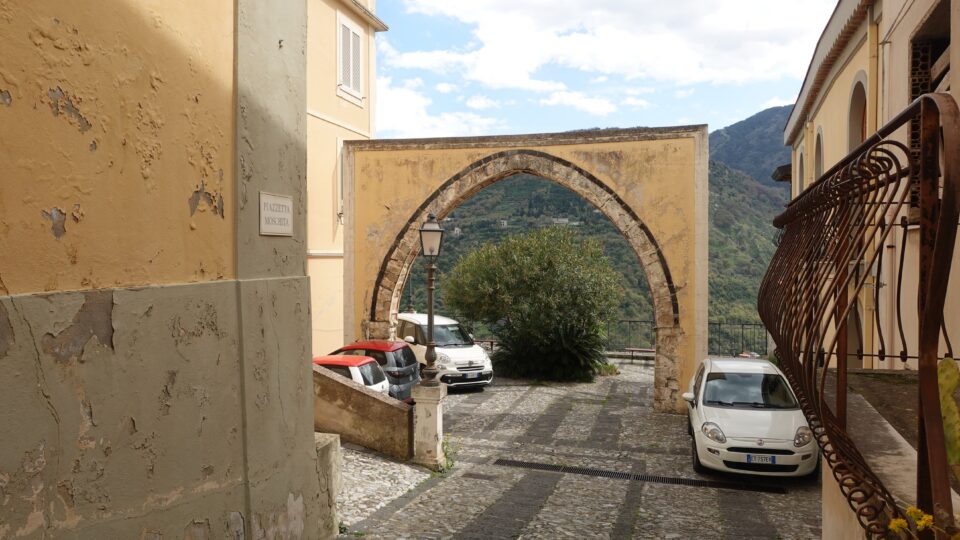
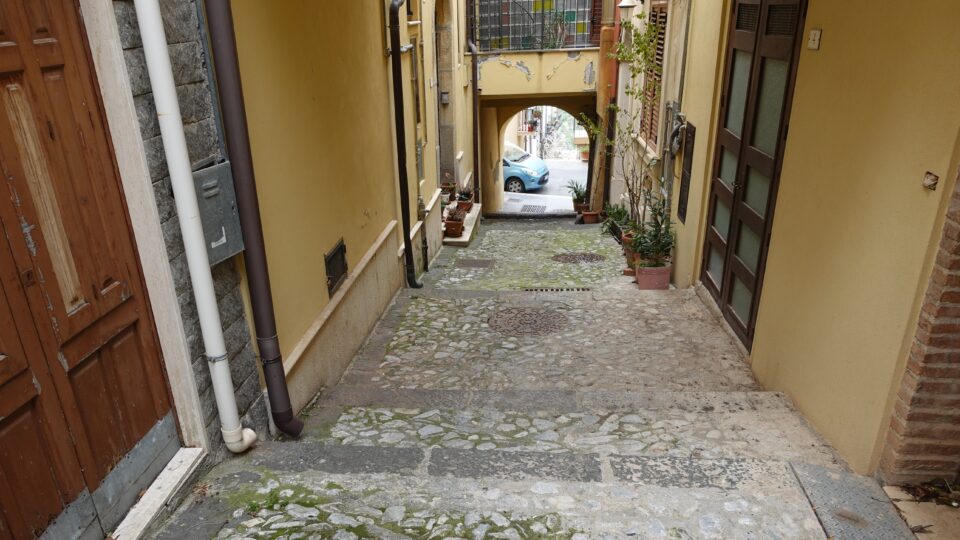
The sign also includes a short historical summary of Castroreale, and in the English translation, it states: Castroreale obtained from the various sovereigns a sense of privileges that gave it some economic prosperity. Certainly not extraneous to this, until the end of the 15th century, was a big and active Jewish community, of whose synagogue, enlarged in 1487, today there remains the arch that can be seen behind the pawnshop.
It’s understandable that the Jewish community played a role in the town’s economic prosperity. However, mentioning that the synagogue is behind the pawnshop seems like an mistranslation. 🙂
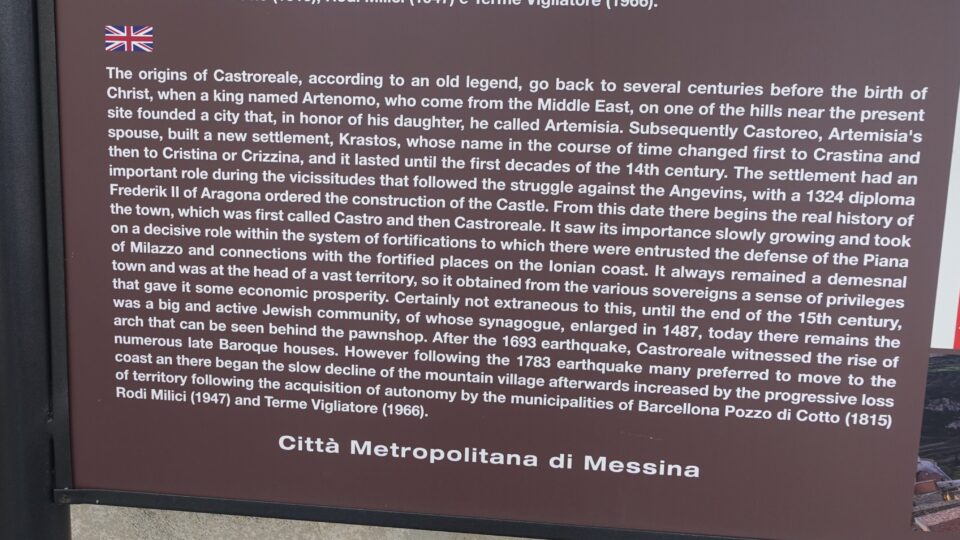
Castroreale sits at about 400 meters (1,300 feet) above sea level, with viewing platforms at both ends of town offering panoramic views of the surrounding valleys.
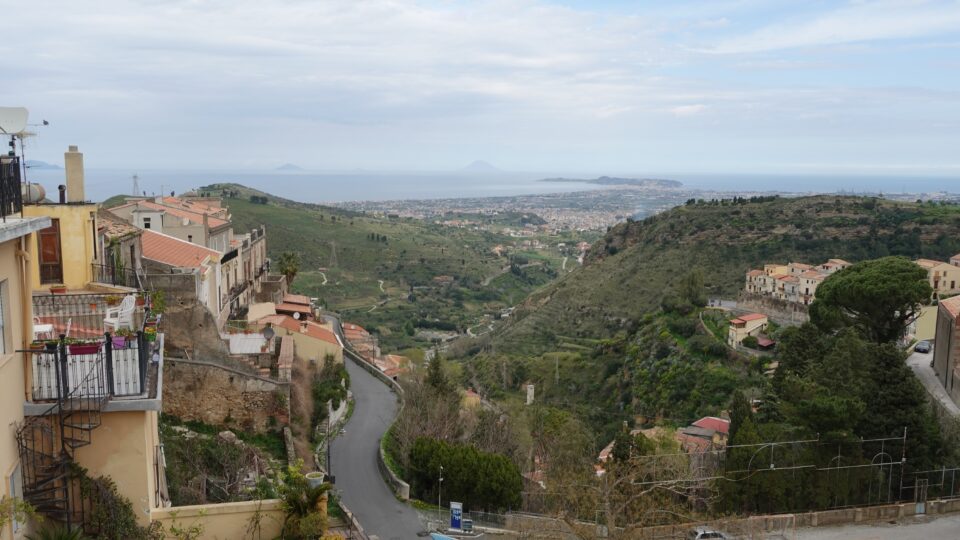

Our next destination was Randazzo, a nearly two-hour drive away. The route was incredible – small mountain roads in the middle of nowhere, winding through breathtaking scenery. Then, suddenly – BOOM! We had a small accident. On a curve, a car coming from the opposite direction hit our back door with its mirror. Luckily, both cars were still drivable. After exchanging information with the other driver (once again, thank you Google Translate), we continued on our way, a bit shaken but thankful that nothing worse had happened.
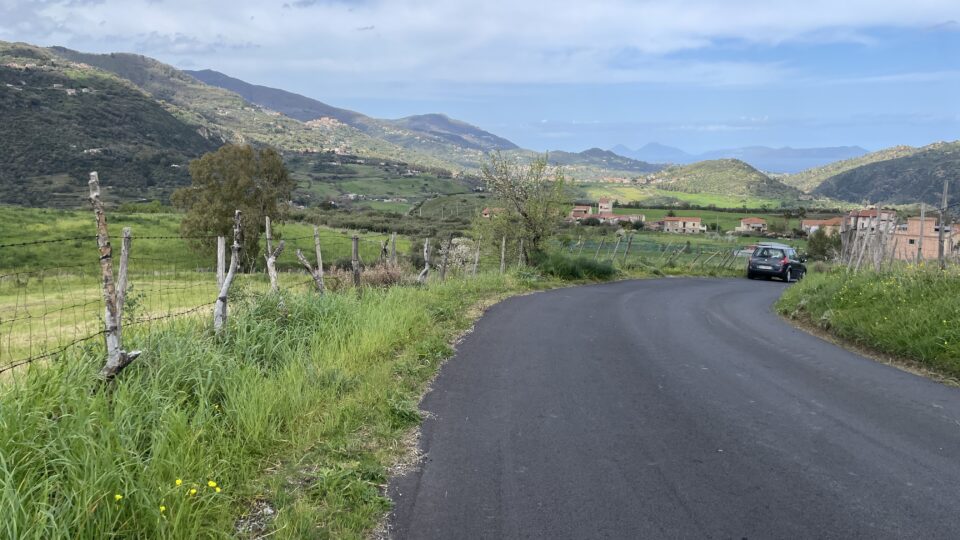
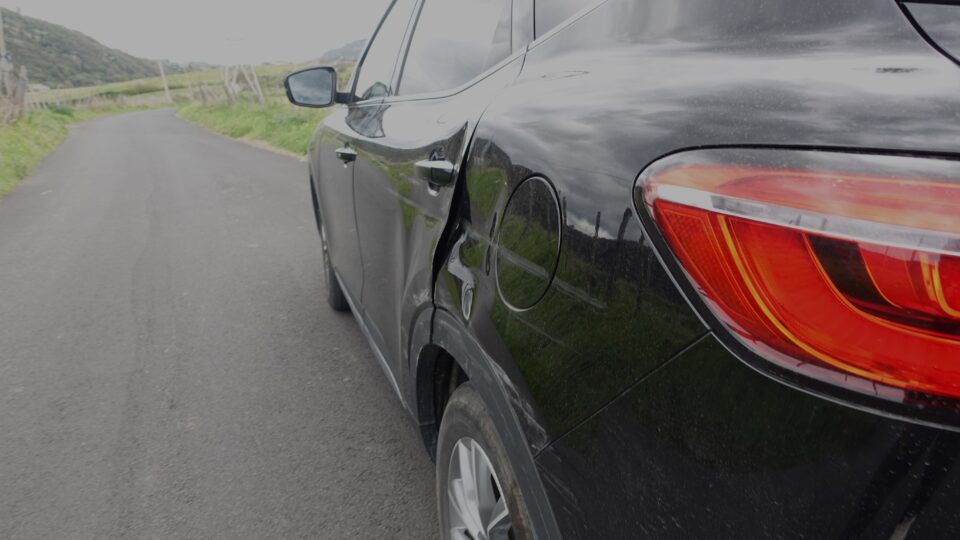
As we climbed higher into the Nebrodi Mountains, reaching an elevation of about 1,200 meters (3,940 feet), the scenery became even more spectacular.
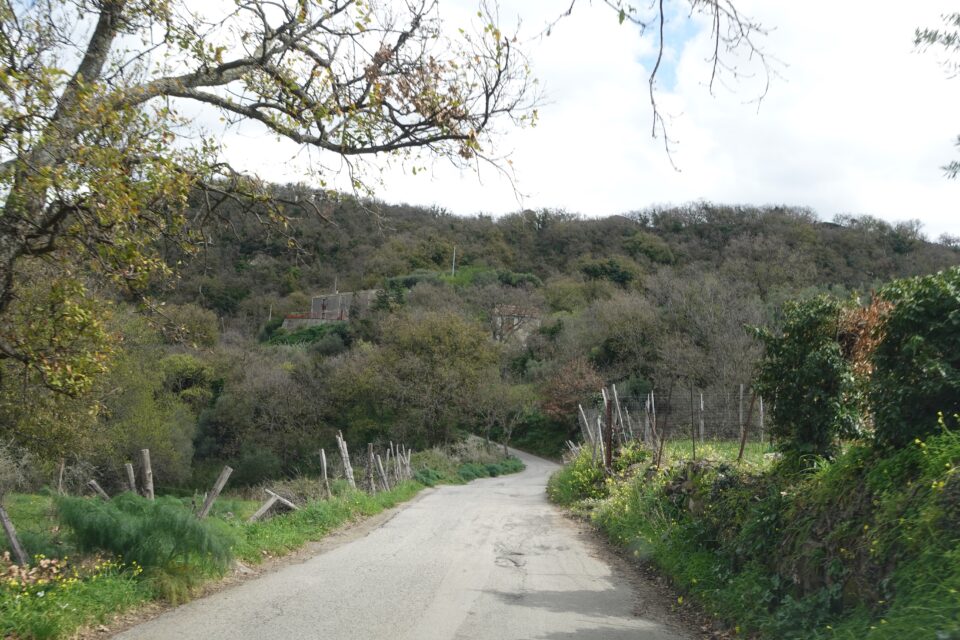
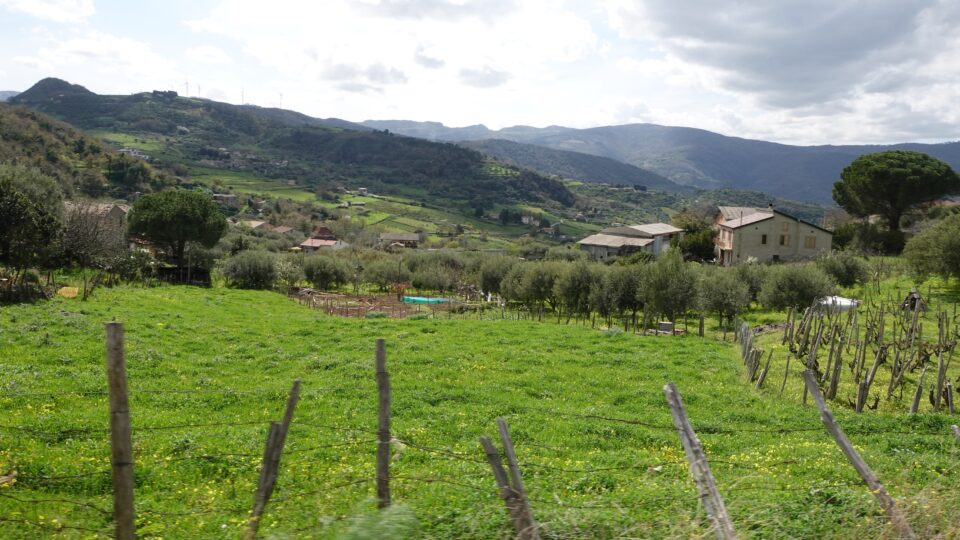

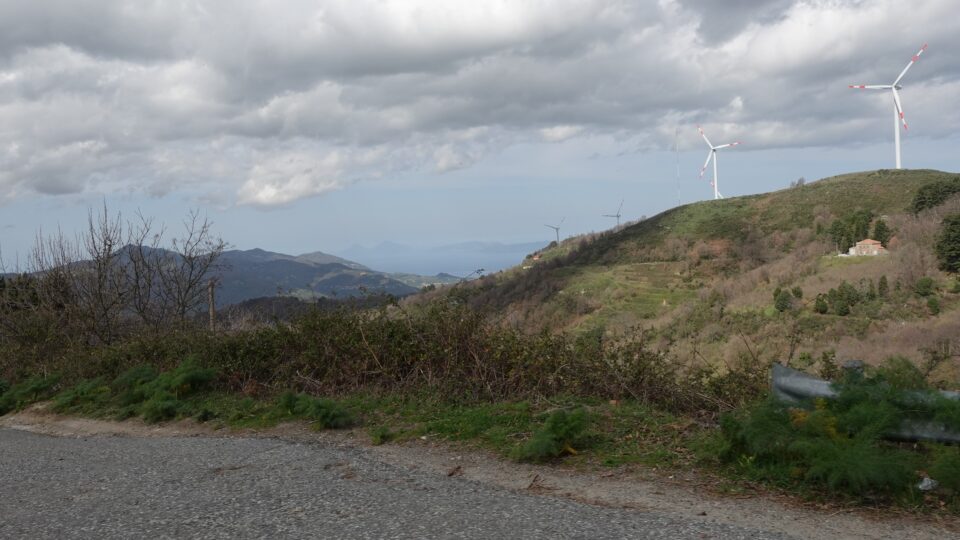
With today’s clear skies, we finally had an unobstructed view of Mount Etna. Just before reaching Randazzo, we turned a corner, and there it was—standing tall and majestic, with a wisp of smoke rising from its crater.
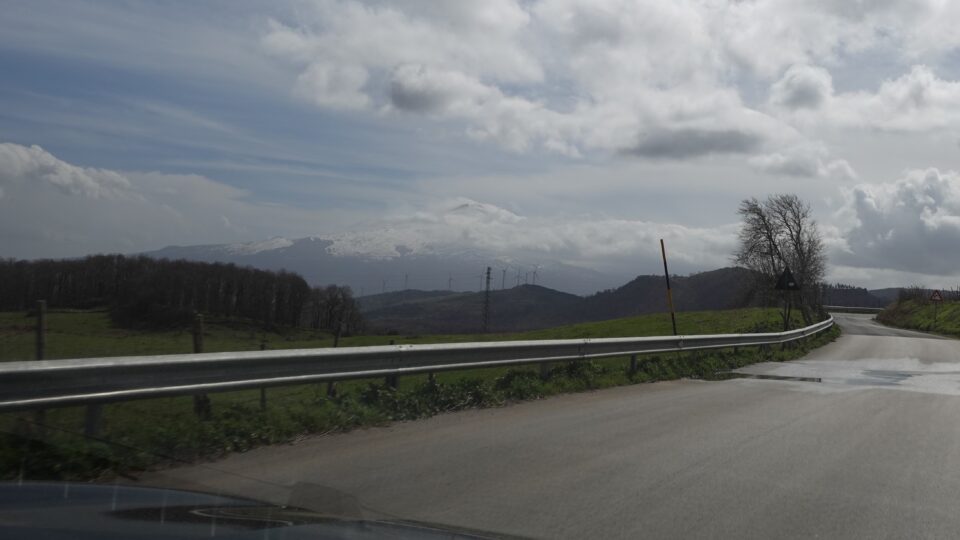
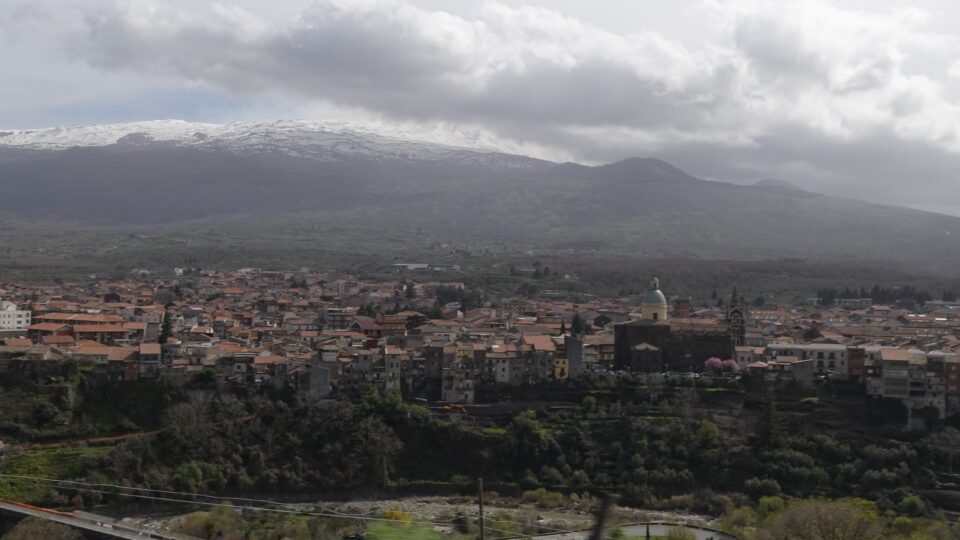
Randazzo, a medieval town of about 11,000 people, sits on the northern slopes of Mount Etna, making it the closest town to the crater. Many of its buildings are made from solidified lava rock, giving them a dark, distinctive appearance.
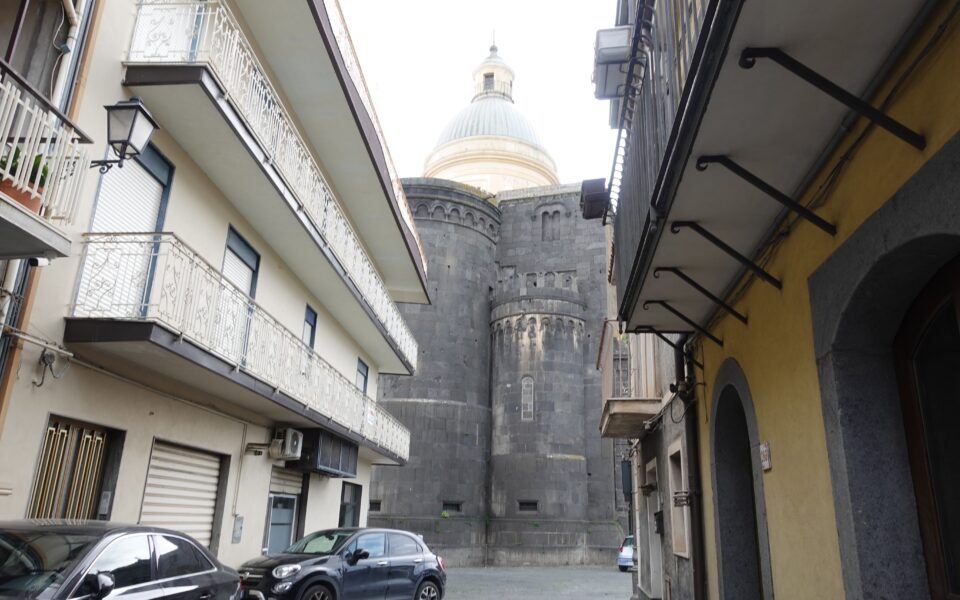
Like Castroreale, Randazzo once had a small Jewish community. Historical records confirm its presence during the medieval period, though the exact location of the Jewish quarter is unknown. However, one of the town gates, still standing today, was once called Porta degli Ebrei (Gate of the Jews), suggesting it may have been near the Jewish neighborhood. Today, it is more commonly known as Porta Aragonese.
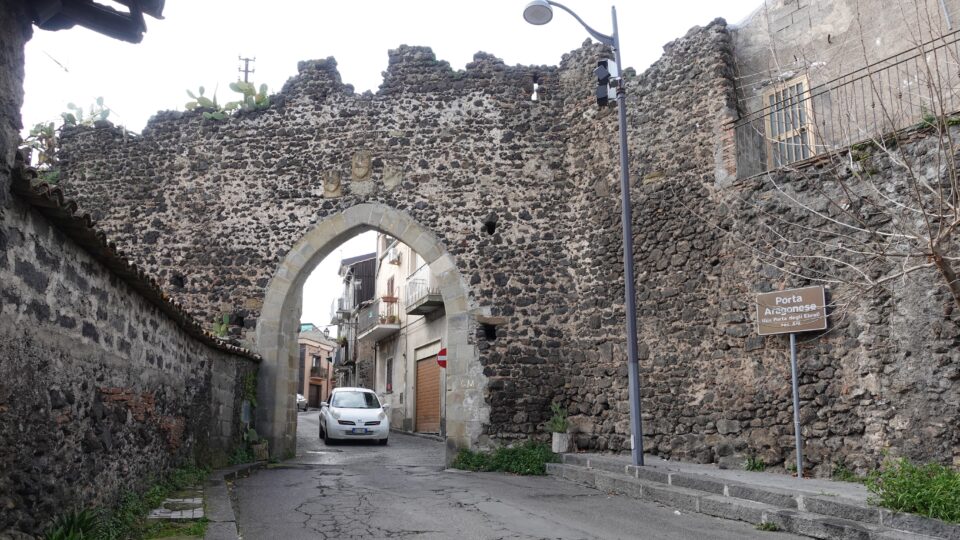
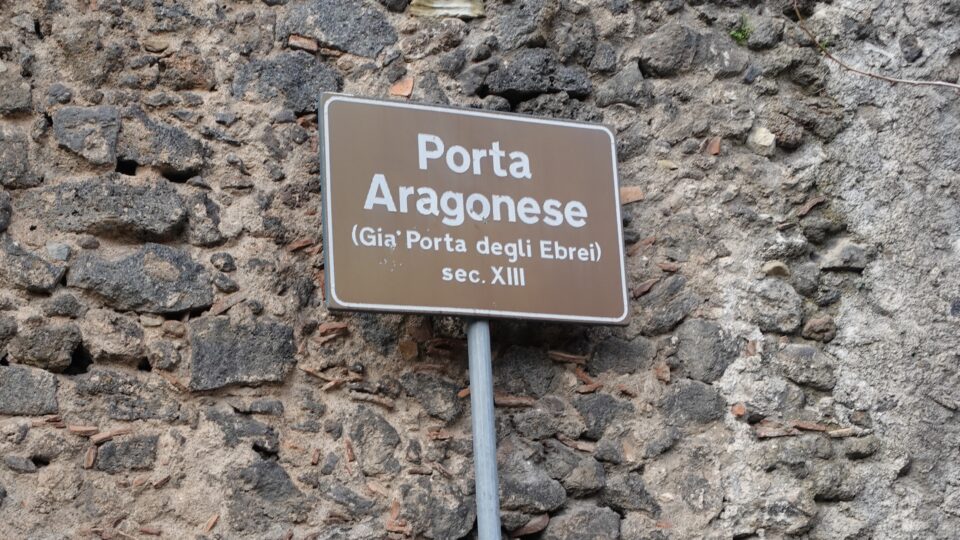
While exploring, we noticed a menorah decoration in a church window—not sure why it was there, but it was a curious find.
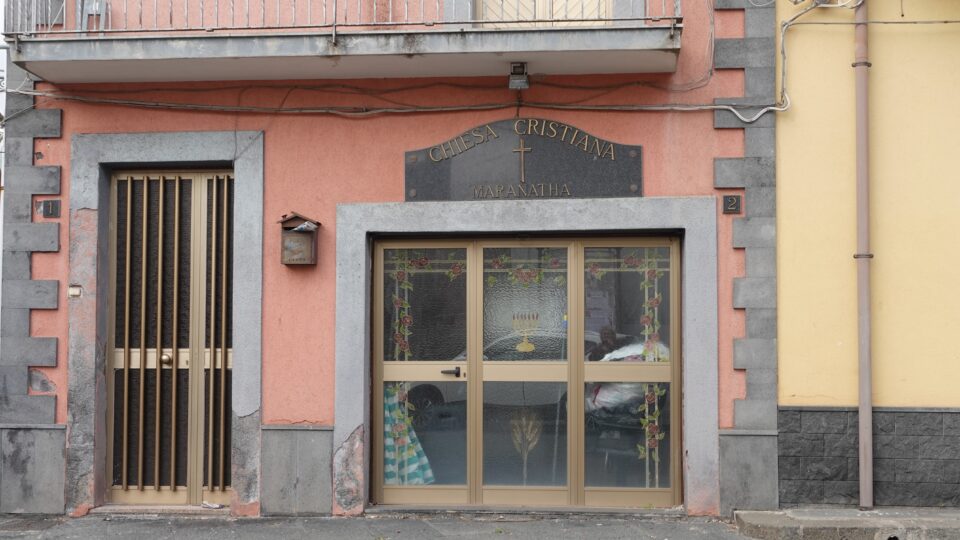
To reach Catania from Randazzo, we drove along the southern base of Mount Etna, passing through an area known for its vineyards. The mineral-rich volcanic soil of Etna enhances grape quality, making this one of Sicily’s renowned wine-producing regions.
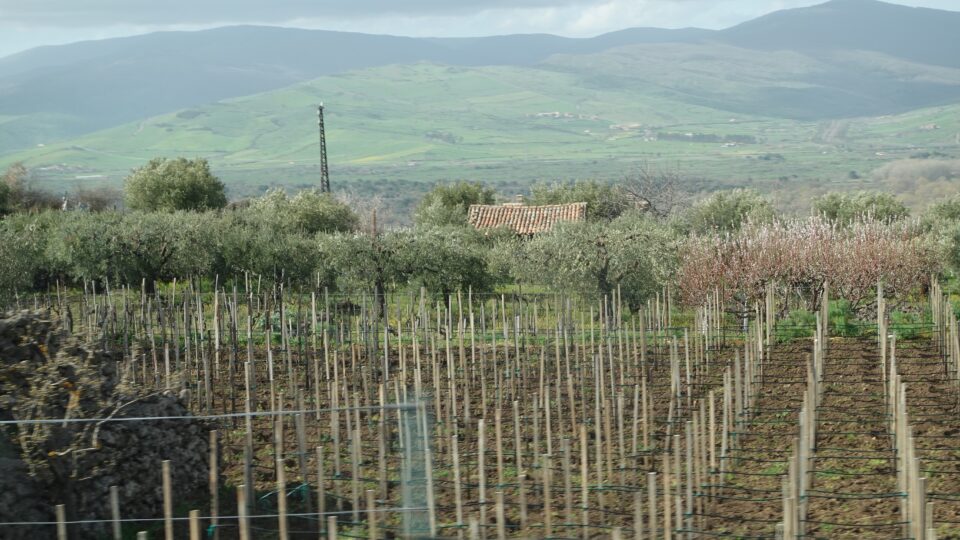
Since we were only staying in Catania for one night, I booked a room in a northern suburb, conveniently close to the Jewish Community of Catania (La Comunità Ebraica di Catania.) Before checking in, we stopped by the address we had to confirm the time of the Megillah reading. Approaching the location, something felt off—I had expected a small building or apartment, not the imposing, castle-like structure in front of us.
Yet, the address was correct. Leucatia Castle (Castello della Leucatia), also known as the “Ghost Castle”, was built in 1911 by a wealthy Jewish merchant as a wedding gift for his daughter, Angelina. The building is adorned with six-pointed stars, a clear nod to its Jewish heritage.
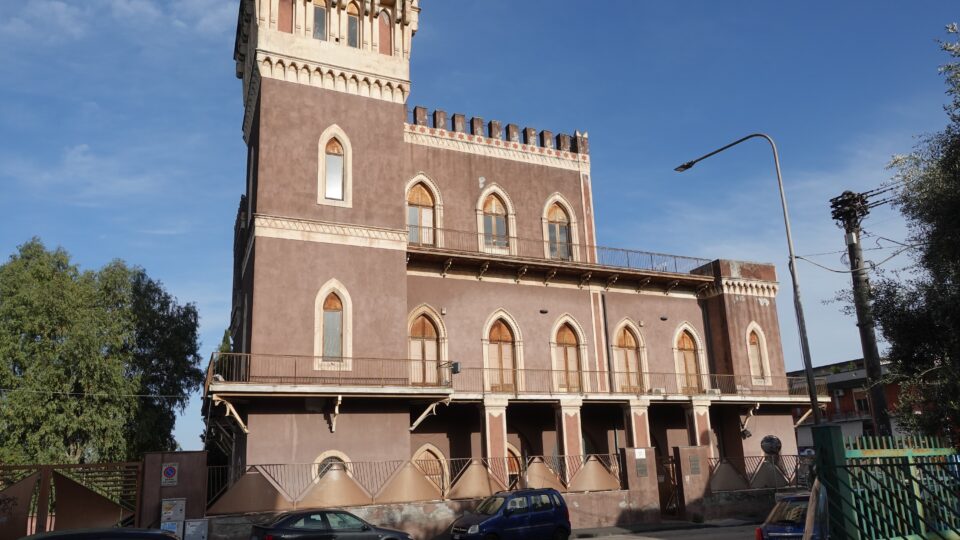
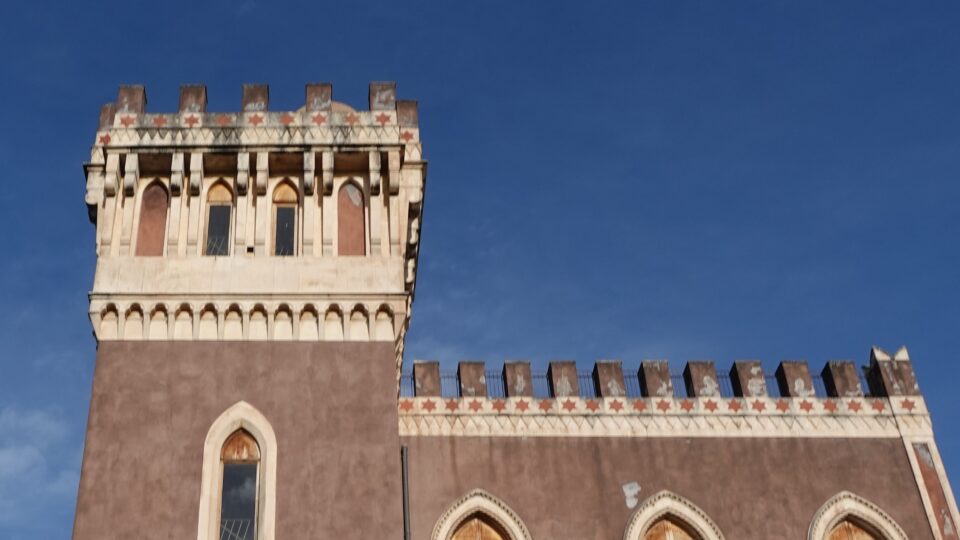
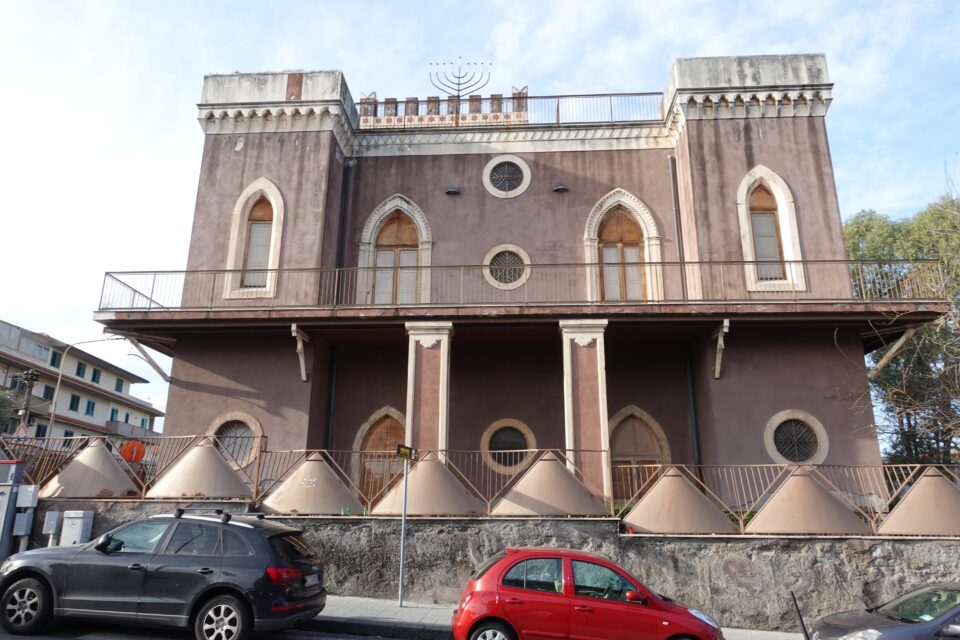
According to legend, Angelina, unwilling to accept an arranged marriage, leapt to her death from the castle’s tower. Locals claim her ghost still lingers, with reports of whispers, shadowy figures, and unexplained noises. After Angelina’s tragic death, the family sold the castle.
During World War II, it was requisitioned as a German anti-aircraft stronghold. The Municipality of Catania acquired it in 1960, but it remained neglected until its 2001 transformation into a Cultural Center and Library. Then, in 2022, history came full circle when the Jewish Community of Catania inaugurated a synagogue inside the castle – the first Jewish services held in the city in over 500 years.
Unaware the building had multiple uses, Mark walked inside and asked a secretary about the Megillah reading. Not quite understanding his English, she confidently replied, “19:00.” Unfortunately, she worked for the library, not the Jewish community—so that wasn’t the correct time.
The Jewish Community of Catania was founded in 2017 by local attorney Baruch Triolo. The community is very welcoming to those wishing to reconnect with their faith. Many members are descendants of Jews forced into hiding during the Spanish Inquisition. A Torah Scroll was donated to their synagogue by the Jewish Community of Washington DC. In addition to the synagogue, the community established a school, a yeshiva, for those wishing to study Judaism.
Thinking we had plenty of time before the Megillah reading, we checked into our apartment and returned to the castle around 18:45. Upon arrival, we were greeted by a noticeable police presence, confirming that we were indeed in the right place. The courtyard entrance was locked, so we waited, expecting others to arrive, but no one else appeared. We rang the intercom—no response. 19:00 came and went and still no one. Finally, one of the policemen, seeing our frustration, made a phone call, and shortly after, someone from inside came and escorted us into the synagogue.
The synagogue was a small room on the top floor. The community follows Sephardic Orthodox traditions, so men and women sat separately. In total, there were nine men and five women of varying ages—and notably, no children. The rabbi, wearing a black robe, a large Magen David on a gold chain, and a a black brimless, cylindrical hat, led the Megillah reading, already in progress. When Haman’s name was mentioned, there was a polite, subdued stamping of feet.
After the reading, almost everyone stayed for a meal, and we were invited to join. Communication was a mix of Italian, English, and Hebrew. Before the meal there was the ritual washing the hands, which was done outside on the porch using two pails—one for drawing water and one for catching it as people poured the water over their hands. One person who knew the blessing, would then hand each person a paper towel and help them say the proper blessing.
The kosher meal included Sicilian specialties like arancini—stuffed, breaded, and fried rice balls. The rabbi led the saying of the blessings before eating, word by word, so all could repeat.
Celebrating Purim here reinforced for me the vital role this community plays in teaching and preserving Jewish traditions. Unfortunately, not everyone agrees with their efforts. The homepage of their website clearly states that they operate independently and are not affiliated with UCEI (Unione delle Comunità Ebraiche Italiane – Union of Italian Jewish Communities). As the central body representing Italy’s Jewish communities, UCEI does not officially recognize the Jewish Community of Catania and is pursuing legal action against them for operating without authorization from Rome.
Sorry, no photos, but for us, this was definitely a Purim to remember.

A special Purim to remember